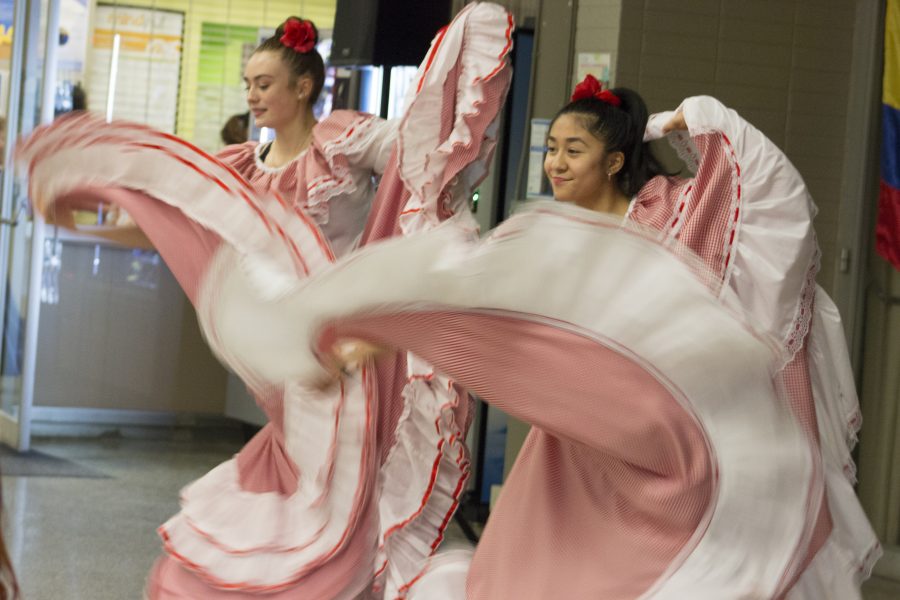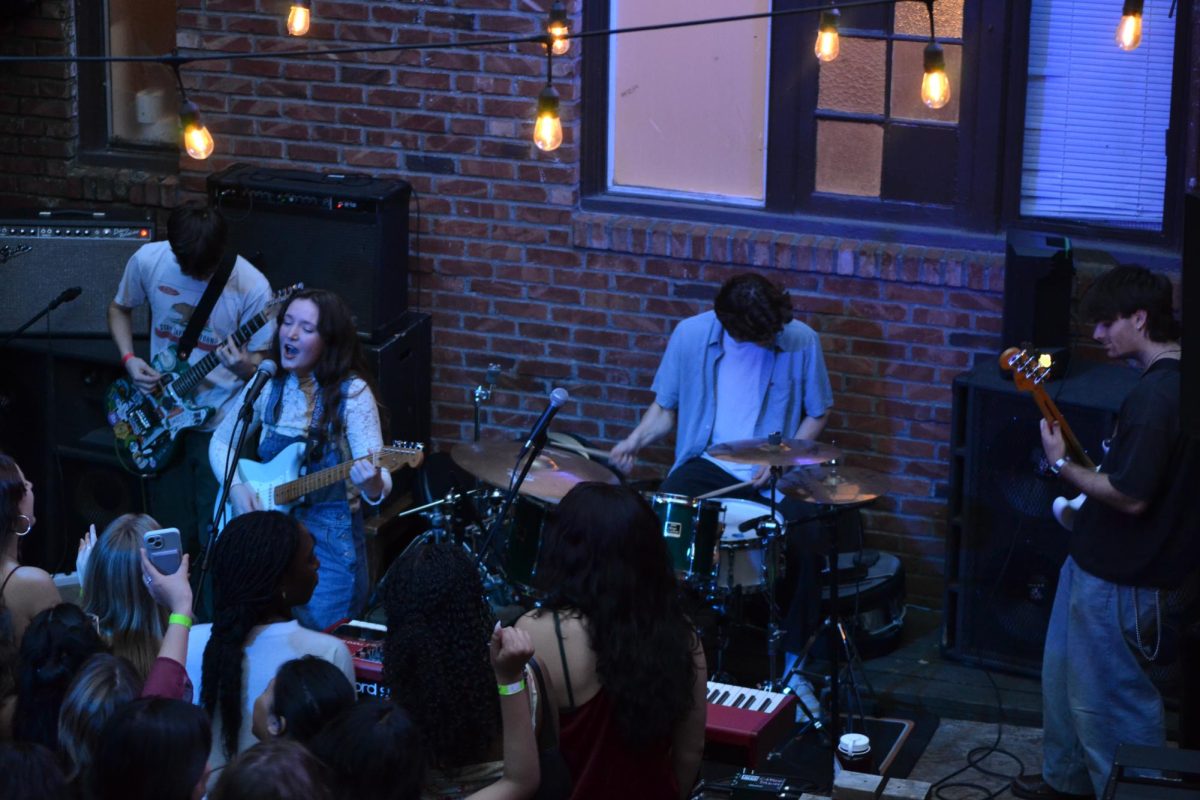Find solidarity in community at Latinx Unidos fiesta
Students and professors alike stepped in unison from left to right, arms rhythmically moving in circles. Celebrating Colombian culture at Latinx Unido’s “Carnaval de Colombia” on April 12 in the Student Union Building’s Gazebo Room, they mimed their instructor’s steps of a dance known as cumbia, a highly popular dance native to the country.
Choosing a different country or region annually for their end-of-the-year fiesta, Latinx Unidos this year highlighted the food, dance, attire and flare of Colombian culture. The club’s events are oriented toward educating Seattle Pacific University’s community about the multitude of different cultures that exist within the Latinx community, like Colombia’s, which can often be forgotten in celebration and conversation.
Creating this space for celebration, Latinx Unidos exemplified their purpose: to celebrate, educate and find solidarity within their community.
“There are a lot of differences between Latin American countries, but there is a unity as well. It’s really nice to be able to have that community that I might not feel elsewhere on campus,” said Rebeca González, Latinx Unido’s publicist and social media coordinator. “I am so passionate about building a community and being able to create a space where we can celebrate our cultures.”
For a $5 entry fee, guests ate traditional Colombian food catered from Seattle-based restaurant El Pareche Colombiano. Members of Latinx Unido’s core served guests Bandeja paisa, a platter originating from the Paisa Region in Northwest Colombia.
Consisting of white rice, red beans, arepas, chorizo and plantains, the dish has an array of different influences, varying from the indigenous peoples of Colombia, Africa and even Colombia’s Spanish colonizers.
Served with it was jugo de lulo, a sweet, green drink common in the Valle del Cauca region of the country.
While enjoying their food, guests watched dancers perform native Colombian dances.
Marcela Rosero, the organizer of the dancers, explained to guests the importance of cumbia, whose roots come from Africa. During Colombia’s colonization, dancing cumbia was known to be an act of resistance for slaves, she said.
Spain’s colonial influence is also seen in some Colombian dance attire. Wearing high buns with red flowers stuck in them, as well as long red and white dresses, the dancers’ clothes at the fiesta were reminiscent to those of flamenco dancers.

Dancers also educated guests on Colombian history and geography.
Pointing to the Colombian flag on the wall, Rosero discussed the significance of its colors: yellow representing the gold Colombia once owned before colonization, blue representing the country’s contact with the Pacific and Atlantic oceans and red to represent bloodshed in Colombia’s struggle for independence against Spain.
“It’s actually very refreshing to find that there is interest in learning specifically about Colombia,” said Angela Delahoz, a performer and dance teacher native to Bogotá, the Colombia’s capital. “It’s very satisfying to find that there is an interest particularly in this country so we could actually go in depth on what it means to be a Colombian.”
Delahoz educated guests on the importance of Sanjuanero, another kind of dance traditional to the country, prior to performing it solo.
Guests noted the value of learning about a culture not commonly discussed or taught.
“With my family from Mexico, I think it’s very eye-opening to see what the other cultures are like, as well as learning things about my own that I didn’t necessarily know,” said Jazmin Lopez Ibarra, who attends Latinx Unidos’ bi-weekly meetings. “I don’t think I knew very much about Colombia prior to coming to this, but I love hearing the way they describe their country.”
“I think it’s really important to be supporting the other cultural clubs on campus. It’s a way for us to show solidarity as fellow people of color,” said Jacky Nakamura, who serves on the board of SPU’s Asian American Student Association.
Latinx Unidos hopes to hold events more frequently in the future in addition to their end-of-the-year fiesta in order to reach a broader scope of members within SPU’s community.
“I think the event had a great turnout,” club secretary Alexandra Olmedo said.
“Connecting with people from SPU and from our community that I probably wouldn’t have met otherwise was just awesome.”

















































































